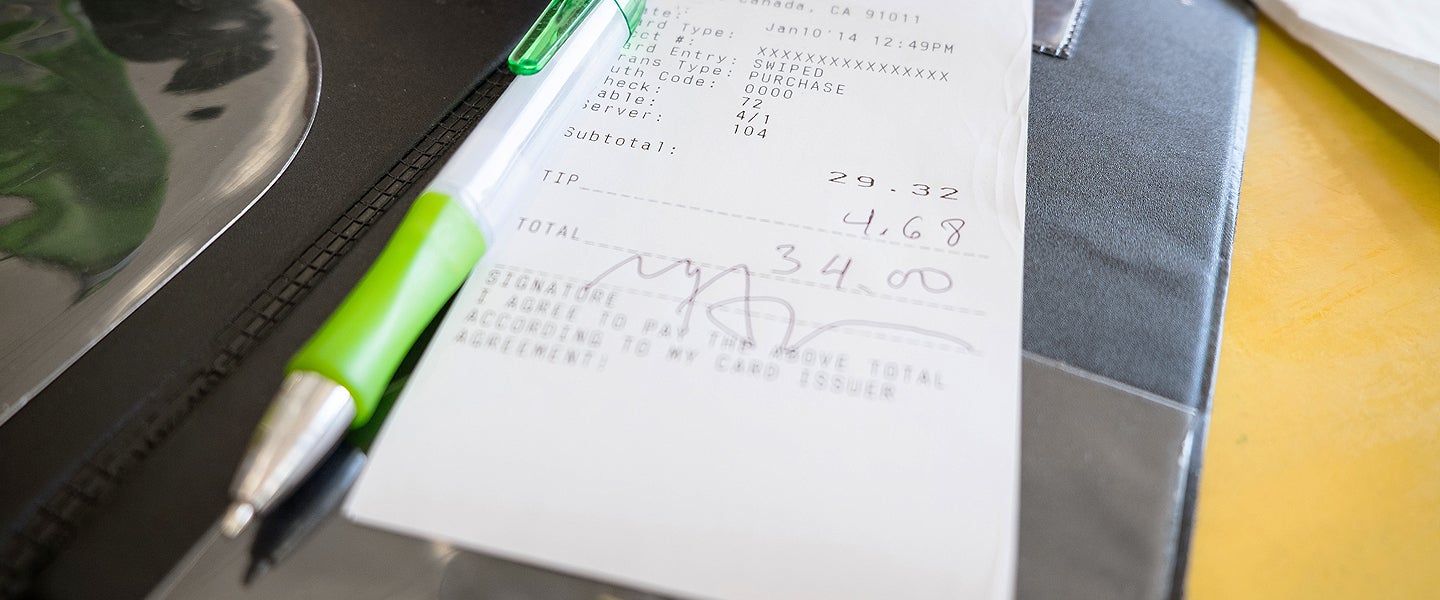That pen tied to the counter of your favorite takeout spot probably isn’t looking too hot to you right now. Who knows how many people have touched it? When was the last time it was disinfected? Do you really need to sign the receipt?
Well, it varies.
In the majority of situations, you don’t actually have to sign the receipt in order for your credit card to be processed. While it’s technically a measure against fraud that works in your benefit, credit card technology has advanced to the point where the signature is essentially useless. Major retailers like Target and Walmart stopped requiring them years ago, and no major credit card requires it on their end, either.
In the past, your signature was intended to be a type of guarantee that you’re the legitimate owner of your credit card, and that you approve of the purchases made with it — basically, an added piece of evidence that the exchange took place. But it’s certainly not the most advanced form of security, which is why it’s being phased out. Some places, like jewelry stores, choose to keep the signatures, and they’re allowed to do so. You don’t have to sign, but then, they don’t have to sell you anything, either.
Still, they’re the norm in many restaurants, because in tipping scenarios, the rules are a little different. In a restaurant, the credit card receipt basically only exists so you can add a tip. Your signature, again, serves as that less-than-iron-clad piece of evidence that you approved of that purchase. Further, the receipt with the added tip functions as a tax record for the tipped employee. Assuming you didn’t sign the receipt, you probably didn’t write in a tip, either. A restaurant can process a blank receipt, but wouldn’t legally be able to add any type of tip unless they have a policy of adding a service charge visibly on display or on their menus.
If you really, really don’t want to touch a pen, you could indicate the tip you want to give verbally. When ordering over the phone (a technique that benefits the restaurant far more than ordering from a third-party app, by the way), it’s safe to share your card info. You can tell the person taking your order to add a particular tip, and bam, now you don’t even have to take your credit card out in public. Of course, you can apply the same technique in person, too, though there’s some contact with public surfaces involved.
Even in restaurants, there’s no legal obligation to sign the receipt, but the fact that you might not be able to tip otherwise means there is an ethical obligation. Further, without a written signature, there could potentially be some issues for either the restaurant or yourself if either party claims fraud and needs to be investigated. Generally, restaurants want to keep solid records of their transactions in the event of an audit, anyway. But from the customer’s perspective, there really isn’t much to worry about. Depending on your credit or debit card policies, you likely aren’t liable for fraudulent charges at all. The finer details of whether there’s a signature or not don’t matter if you truly didn’t make the purchase. Similarly, restaurants are protected against chargebacks for the original authorized charge with most major credit cards.
Overall, receipt signatures still exist where they do as a small form of protection for both parties. Assuming you’re a trustworthy person buying from a trustworthy business, a signed receipt isn’t needed. Ideally, you can trust that the business isn’t going to overcharge you or steal your card info, and ideally, they can trust that you aren’t going to falsely claim they overcharged you. That relationship works okay for the most part, but if it sounds suspicious to you, maybe you should just sign the receipt and take one with you.
It’s a pretty cheap way to have peace of mind.

